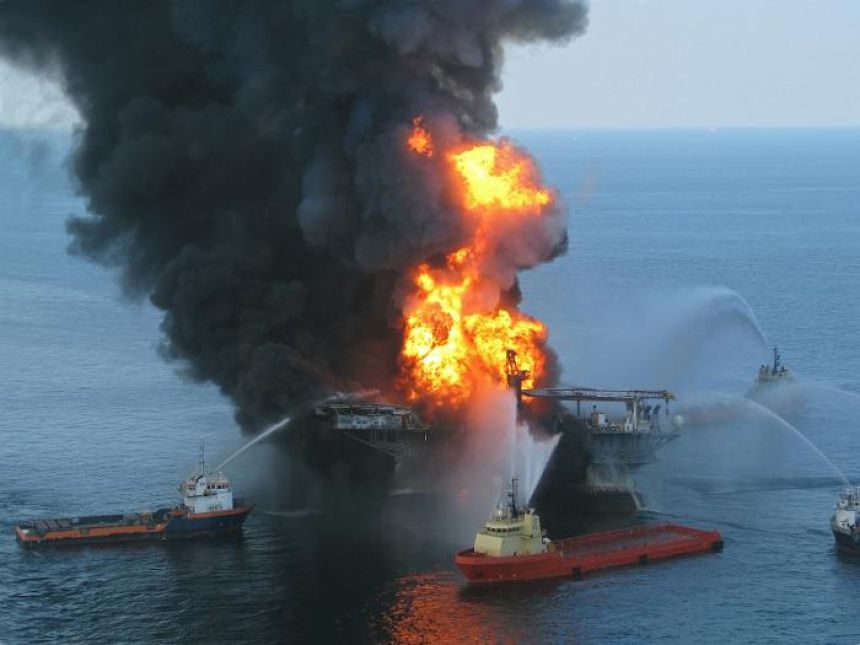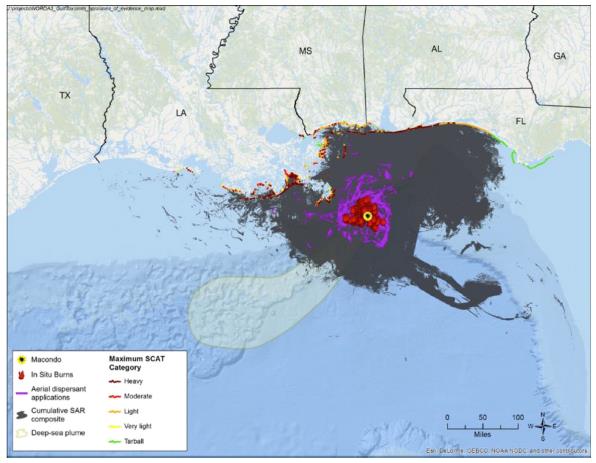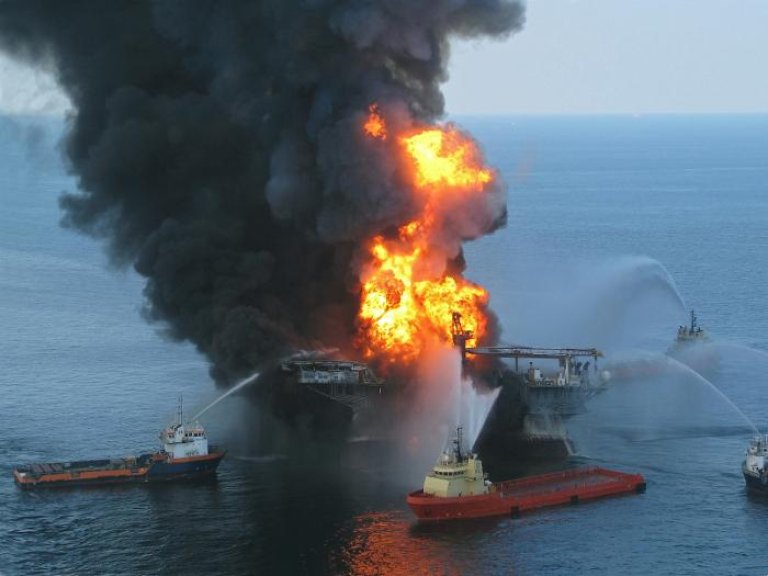
Environmental effects of the Deepwater Horizon oil spill
On April 20th 2010, an explosion on the Deepwater Horizon (DWH) drilling rig led to a catastrophic oil and gas blowout at the BP operated Macondo Prospect at 1522 m depth, in the east Mississippi Canyon area (N 28.73667W 88.38694) in the northern Gulf of Mexico, 66 km off the coast of Louisiana (LA).
When the well was capped 87 days later a vast area of the northern Gulf of Mexico was oil polluted (Fig. 1).

According to decisions in the US v. BP trial (2015) 3.19 million barrels (roughly 500,000 m3) of oil were released into the ocean during the spill, in addition to several hundred thousand tons of hydrocarbon (HC) gases.
- In this review we summarize the environmental research literature of the DWH oil spill under four key themes: (1) the environmental fate of spilled oil and gas; (2) biological/ecotoxicological effects in offshor ecosystems; (3) effects in nearshore and coastal sites; and (4) effects on long-livedmarine organisms, says Jonny Beyer, Research Scientist at the Norwegian Institute for Water Research (NIVA) and lead author of the article.
Catastrophic blowout
The amount of litterature is vast, however, some conclusions from the review can be summarized:
- Fate-oriented studies show that oil spread both in deep waters (1100–1300 m depth) and at the surface. Only a minor part of the released oil (less than 15%, and possibly as little as 4%) made landfall along the coast; this partly due to the great depth of the blowout, the extensive use of oil dispersing agents (both at wellhead and surface) and other response measures (e.g., in situ burning), the massive bloom of oil degrading microbes, high surface water temperature and ocean currents.
- Effects-oriented studies demonstrated that the oil was toxic to a wide range of organisms; including plankton, invertebrates, fish, birds, and sea mammals, causing a wide array of adverse effects such as reduced growth, disease, impaired reproduction, impaired physiological health, and mortality.
- Ecological resources in the northern Gulf of Mexico that were particularly impacted by DWH oil include deep ocean-bottom habitats and deep-sea corals, salt marsh ecosystems, organisms living at and in shoreline sediments and beach sand habitats, nearshore fish, shorebirds, floating Sargassumhabitats and nearshore seagrass areas, sea turtles, dolphins and other cetaceans.

- Although there are numerous knowledge gaps and research needs still remaining, as highlighted throughout our review, the broad collection of environmental research conducted after DWH contributes significantly to our understanding of ecological impacts of major marine oil spills, and this learning helps to clarify which measures are needed, both pre-spill and post-spill, to reduce the environmental effects of such events, Beyer concludes.
>> Read the scientific article: Beyer, J., et al., Environmental effects of the Deepwater Horizon oil spill: A review, Marine Pollution Bulletin (2016). http://dx.doi.org/10.1016/j.marpolbul.2016.06.027